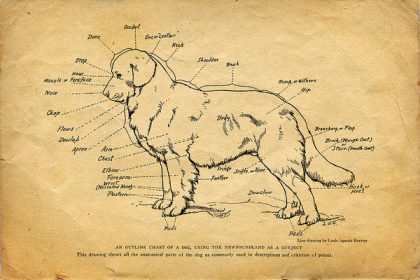
Most of us associate Newfoundlands with being superb water dogs, and they are that, to be sure, but did you know that these dogs aided World War II soldiers by delivering supplies and ammunition in blizzard conditions?
That said, there’s no escaping their prowess in water. Newfoundlands grew such a good reputation for their ability to rescue drowning swimmers that in England during the 1800s, every lifeguard station along the British coast was required to employ two Newfoundlands.
One reason the breed excels at water rescue is its inborn instinct to save people in trouble. Another, of course, are webbed feet and a tail used as a rudder. The Newf also has a unique swimming style that has been called a modified breast stroke. When a Newf uses the proper stroke, he has to drop down to his natural flotation point which enables virtually all of his power to be used for forward propulsion The breed also has its own techniques when pulling people to shore. If a swimmer is unconscious, the dog instinctively grips the person by the upper arm so that the body rolls on its back and the head is out of the water. Those who are conscious can grab onto the dog’s neck and hang on as they’re towed to land.
As writer, once wrote, “…Newfoundland dogs are Mother Nature’s masterpiece.”
Image: Doggy Diagram Art Print by Tom McNemar is available as wall art, home decor and more here.

Top dog. My whole live with this dog. He was with my father in the war .polish firdt pantser division with General Matzek. He save more than 35 people in the Netherkands in sealand by Veere. A snall place in the water. Since than I grew up with Newfy’s. Now I have Tadeusz 5.5 years and Jasia 6 months. Great with my grandkids
Thank you for writing, Terenia! If you have one, we’d love to see a photograph of your father’s dog, and learn more about his story of having saved so many people. Would you consider sharing it with us?